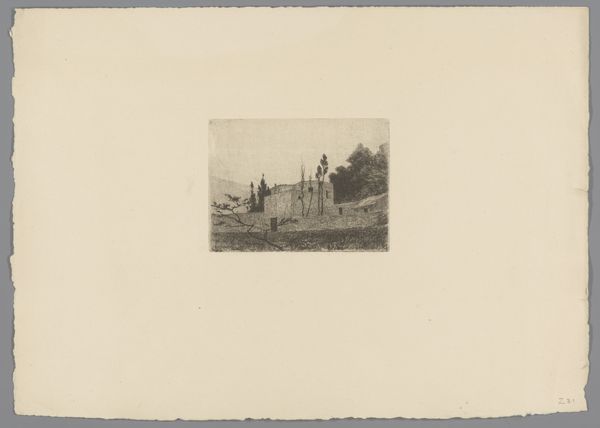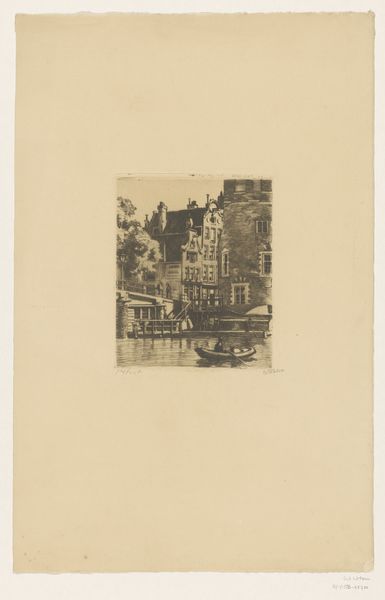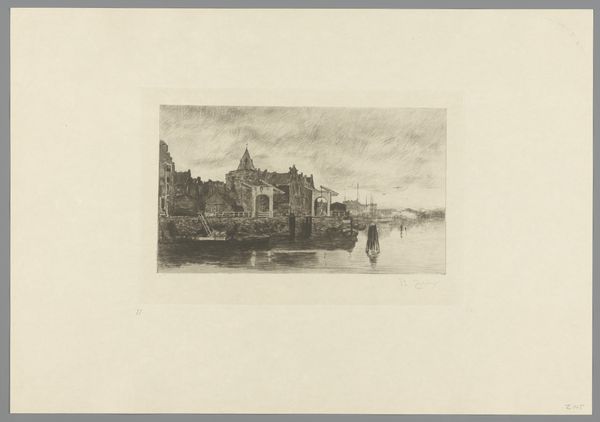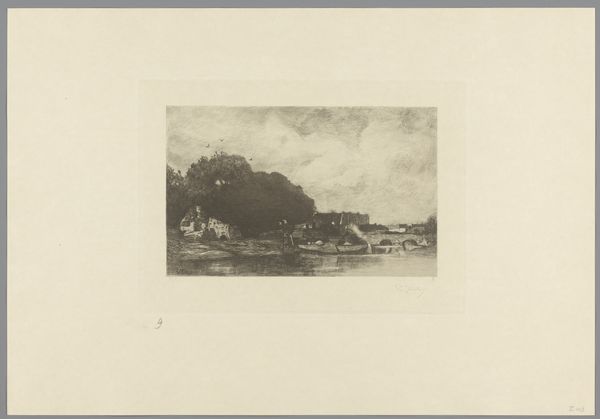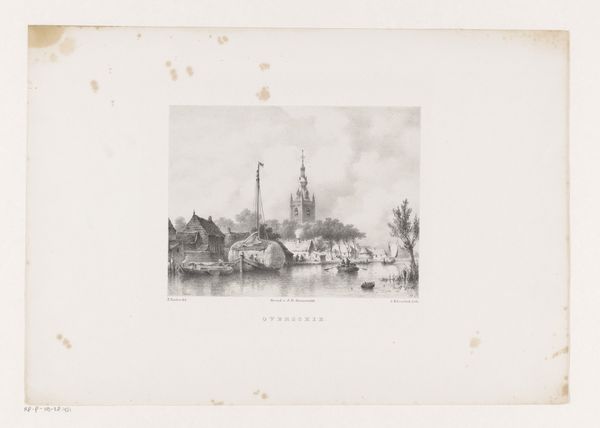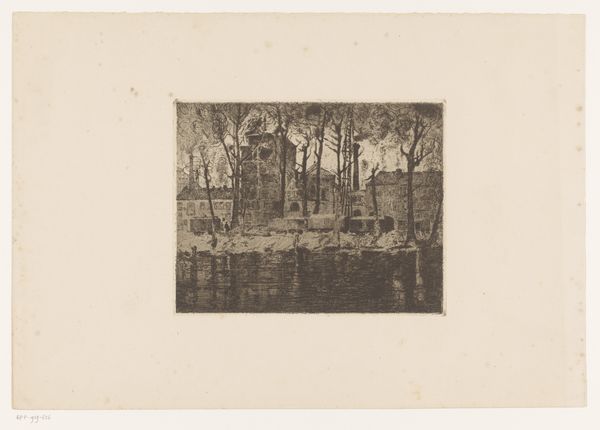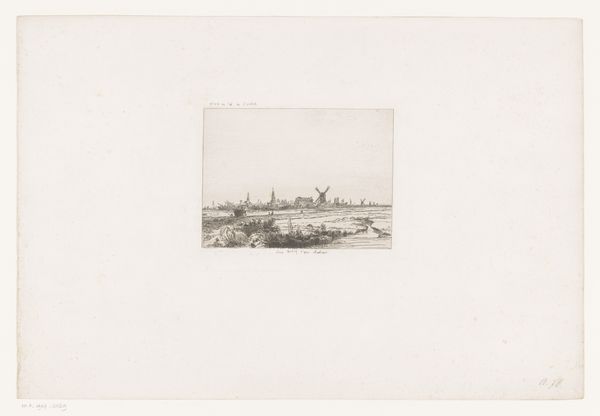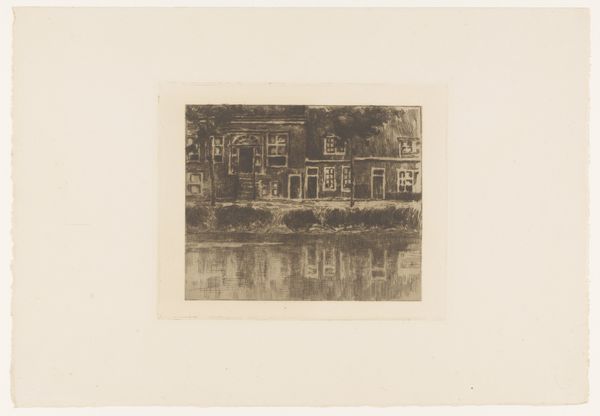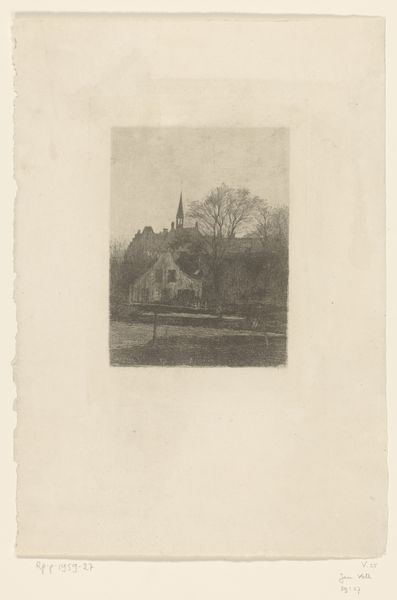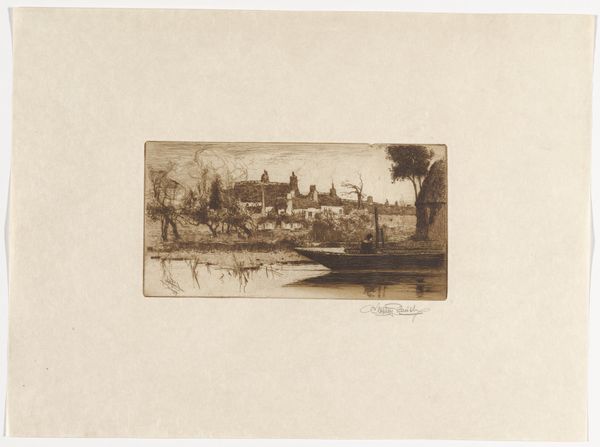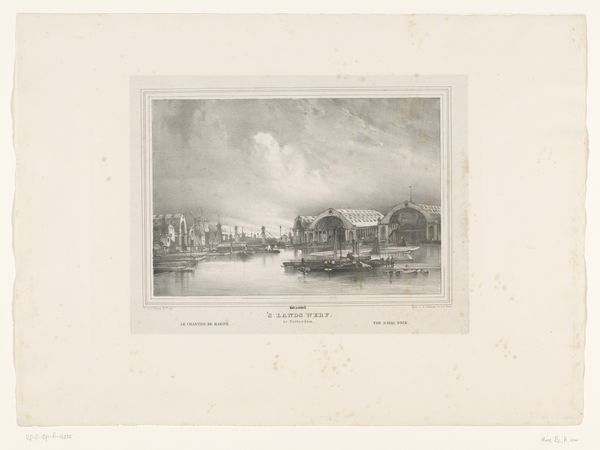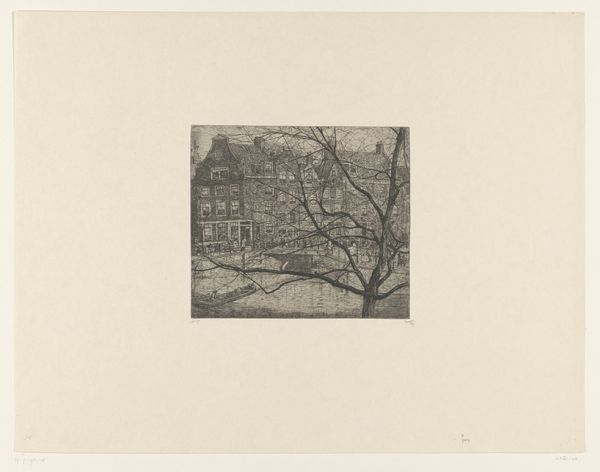
print, etching, paper
# print
#
etching
#
landscape
#
paper
#
cityscape
#
modernism
Dimensions: height 120 mm, width 150 mm
Copyright: Rijks Museum: Open Domain
Curator: This etching on paper, "Gezicht op de Binnenkant in Amsterdam," by Hübner & Van Santen Roeloffzen, dating from around 1912-1913, offers a glimpse into Amsterdam's waterside life. Editor: It's striking, in a very quiet way. The tight, contained cityscape, with the reflections on the water... it feels almost melancholic, like a memory fading at the edges. Curator: The etching technique itself lends to that effect, I think. Note how the artists employed dense networks of fine lines to define the architectural forms, the rigging of the boats, and the textures of the trees, creating a sense of depth despite the monochromatic palette. It really demonstrates control over the materials and process. Editor: Yes, the control is evident. Look at how the reflection in the water dissolves the hard lines of the architecture—brilliant! Semiotically, water often represents the subconscious, so what do you think it contributes here? Curator: I see the reflections of the architecture as almost a metaphor for the rapid changes Amsterdam was undergoing at the turn of the century. It invites the viewer to contemplate Amsterdam as a major port city; this scene presents an everyday work environment shaped by labor and global commerce. Editor: I think it captures something essential about place – a lived-in city that manages to feel timeless. The composition, with the careful positioning of architectural elements and watercraft creates depth and balances the dark tones on the buildings' structures against the lighter planes of the water and sky. The use of black and white brings it down to simple, evocative components. Curator: Certainly, these Modernist printmakers provide an alternative narrative. They move from romantic picturesque landscapes into documenting sites where goods and people flowed. Their chosen materials contribute as much as content and technique to this discussion of a bustling merchant city. Editor: I agree. Well, however one chooses to read the work, there’s no denying the sense of subtle and sophisticated urban poetry they crafted here. Curator: Yes, a thought-provoking, valuable lens onto a particular moment in Amsterdam’s evolution as a mercantile powerhouse.
Comments
No comments
Be the first to comment and join the conversation on the ultimate creative platform.
